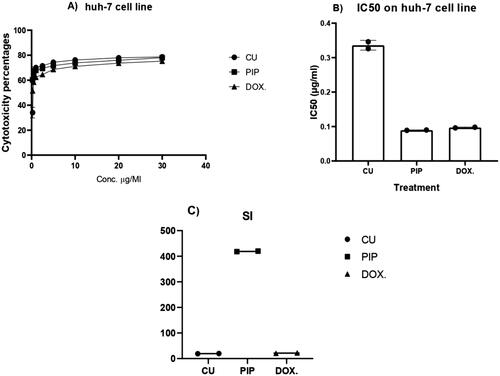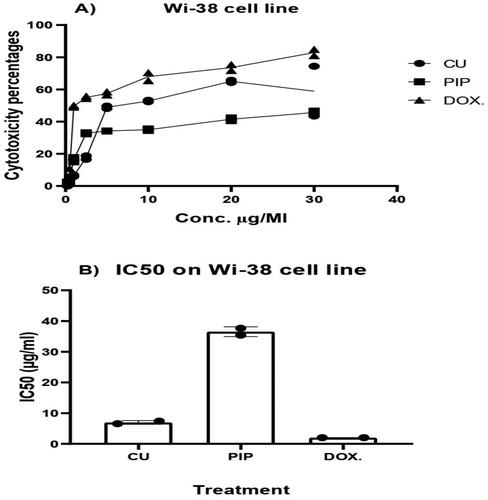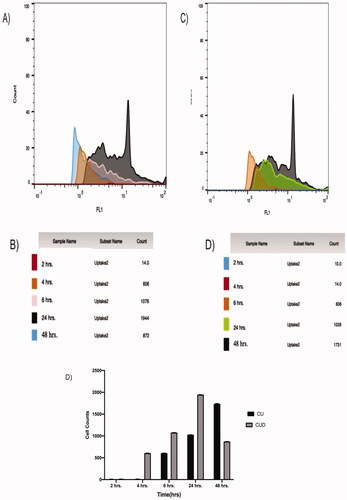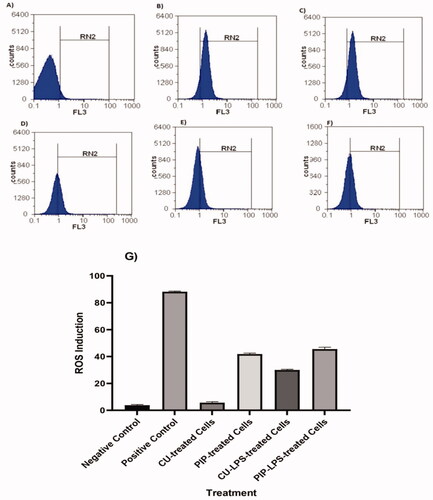Figures & data
Table 1. 21.31 full factorial design variables and constraints.
Table 2. Independent variables and measured responses for the 21.31 full factorial experimental design of PIP loaded BLs.
Figure 2. In-vitro release profiles of synthesized PIP from different prepared BLs compared to parent CU suspension and synthesized PIP suspension.
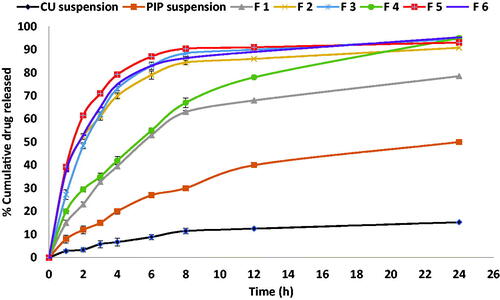
Table 3. In vitro release kinetics for the prepared PIP loaded BLs.
Table 4. Summary of 21.31 full factorial design results for prepared PIP loaded BLs.
Figure 3. One factor plot of: (a) the effect of X1 on R1, (b) the effect of X2 or R1, (c) the effect of X1 on R2, (d) the effect of X2 or R2, (e) the effect of X1 on R3, (f) the effect of X2 or R3.
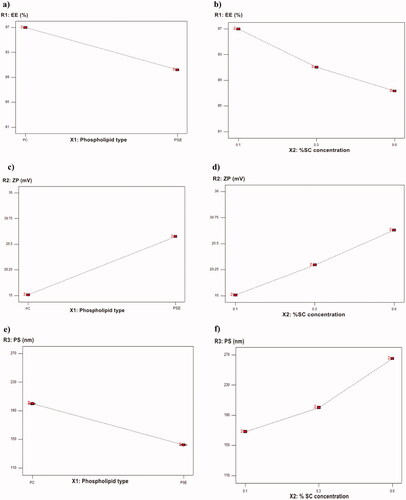
Figure 4. 3D surface plot of: (a) the effect of X1 and X2 on R1, (b) the effect of X1 and X2 or R2, (c) the effect of X1 and X2 on R3.
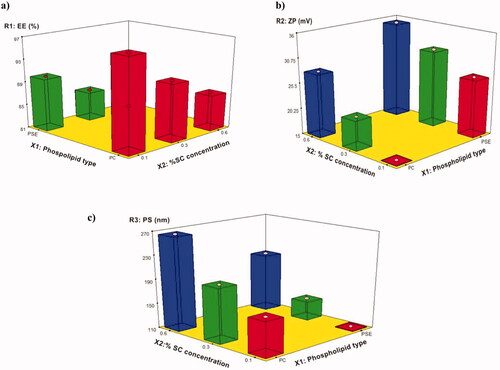
Figure 7. Anticancer and Selectivity index (SI) of CU suspension and PIP loaded BLs against Huh-7 cell line.
